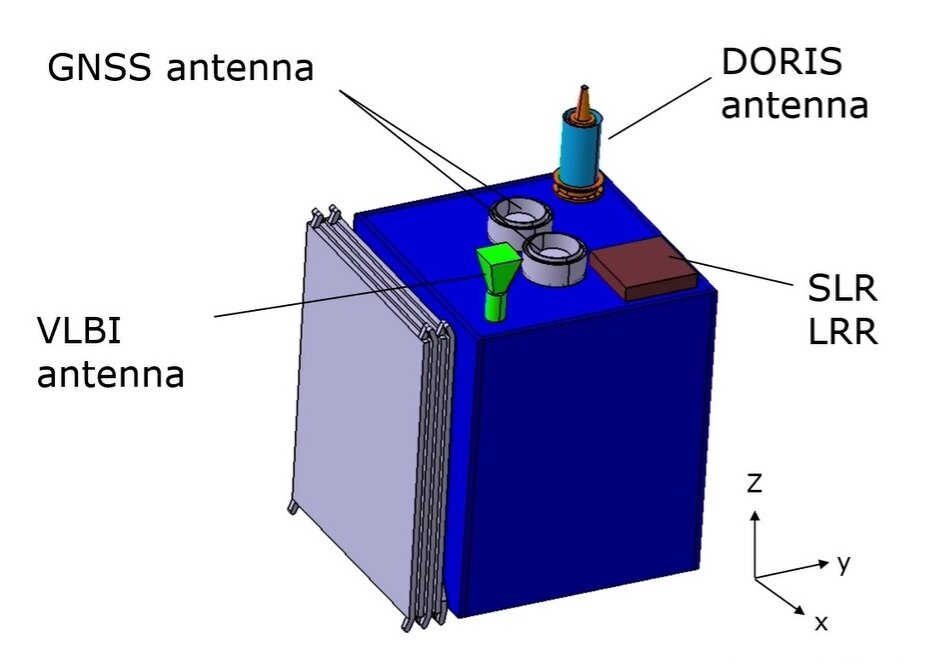GENESIS of a new Earth: join ESA’s Earth measurement mission
The idea behind ESA’s GENESIS mission is simple: a fixed framework is needed to chart the relative positions of locations across our planet, and satellites in orbit serve as the foundation of this framework. Fix a satellite’s own position in space accurately enough and you can measure Earth beneath it much more precisely too.

To achieve this goal down to millimetre level, ESA’s GENESIS satellite will combine and co-locate the four reference existing ‘geodetic’ – or Earth-measuring – techniques on a single platform for the first time. In so doing it will serve to identify and subtract inherent biases within each of these techniques, allowing, in turn, improvements in the accuracy and consistency of the reference frame that is used to organise much of the underlying functions of our civilisation. A new Invitation to Tender is giving European industry the chance to contribute to this groundbreaking mission.

GENESIS is part of ESA’s FutureNAV programme, approved at ESA’s Council at Ministerial Level last November, seeking to respond to new satnav concepts and trends in an effective, agile way, bolstering European competitiveness in this vital sector.
Mapping planet Earth for better positioning
The best place to measure our home planet is actually nowhere on Earth, but from up above it. Satellites are a means of not only monitoring the terrestrial environment but also setting it within a set framework for mapping and pinpointing changes over time. The International Terrestrial Reference Frame, ITRF, is the foundation for all space and ground-based observations in navigation and the Earth sciences and, therefore, its improvement thanks to GENESIS will provide major benefits in all related applications.

GENESIS will combine all four geodetic methods of fixing satellite positions in space: Very Long Baseline Interferometry, VLBI, originally an astronomical technique that combines multiple radio observations from different sites to resolve a given object in high resolution; radio ranging (using France’s DORIS system); satellite navigation; and laser ranging (using the International Laser Ranging Service).
Each of these geodetic techniques have their own inherent biases, which affect the actual accuracy of the Terrestrial Reference Frame that we may achieve when combining them on Earth. By co-locating them together on the same satellite, with the instruments duly calibrated and synchronised, we may cross-check the results and remove these biases over time.

The final goal of the mission is to generate an updated more precise global model of Earth – the International Terrestrial Reference Frame, employed for everything from land surveying to measuring sea level rise – with an accuracy down to 1 mm, while tracking ground motion of just 0.1 mm per year. This improvement, at a stroke, will have a major impact in multiple navigation and Earth science applications, including enhancing the precision of the Galileo navigation system and by extension improving the ‘precise orbit determination’ of all other space missions in turn.
Invitation to Tender open until 31 May
As well as receiving strong support from Europe’s space ministers at ESA’s Council at Ministerial Level in Paris last November, the mission has also received support from NASA and the United Nations International Committee on GNSS.
The ESA Member States currently subscribed to FutureNAV programme Component 2 GENESIS are Belgium, France, Hungary, Italy, Switzerland and the UK.
If you are based in one of these Member States, do you think your company might have a contribution to make to the success of GENESIS? The Invitation to Tender is open from 23 March to 31 May. If you are registered with esa-star, click here for more information.
To find out more about doing business with ESA, including registering with esa-star as a potential tenderer, click here.















 Germany
Germany
 Austria
Austria
 Belgium
Belgium
 Denmark
Denmark
 Spain
Spain
 Estonia
Estonia
 Finland
Finland
 France
France
 Greece
Greece
 Hungary
Hungary
 Ireland
Ireland
 Italy
Italy
 Luxembourg
Luxembourg
 Norway
Norway
 The Netherlands
The Netherlands
 Poland
Poland
 Portugal
Portugal
 Czechia
Czechia
 Romania
Romania
 United Kingdom
United Kingdom
 Slovenia
Slovenia
 Sweden
Sweden
 Switzerland
Switzerland


























